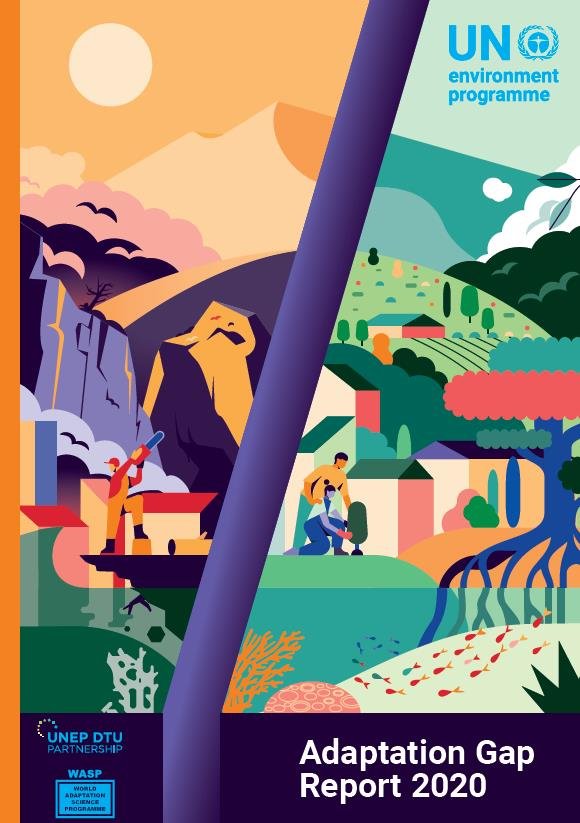 Read this article in French
Read this article in French- Share this article
- Subscribe to our newsletter
UNEP Adaptation Gap Report 2020
Despite nations have advanced in planning, huge gaps remain in finance for developing countries and bringing adaptation projects to the stage where they bring real protection against climate impacts such as droughts, floods and sea-level rise, the UNEP Adaptation Gap Report 2020 states. The report was published in January 2021 by the United Nations Environment Programme (UNEP).
72 per cent of countries have adopted at least one national-level adaptation planning instrument. Most developing countries are preparing National Adaptation Plans. However, the finance needed to implement these plans is not growing fast enough.
Adaptation costs are huge – and they are rising
The pace of adaptation financing is rising, the report states, but it continues to be outpaced by rapidly increasing adaptation costs. Annual adaptation costs in developing countries are estimated at USD 70 billion. This figure is expected to reach USD 140-300 billion in 2030 and USD 280-500 billion in 2050.
Implementation of adaptation actions is also growing. Since 2006, close to 400 adaptation projects financed by multilateral funds serving the Paris Agreement have taken place in developing countries. While earlier projects rarely exceeded USD 10 million, 21 new projects since 2017 reached a value of over USD 25 million. However, of over 1,700 adaptation initiatives surveyed, only 3 per cent had already reported real reductions to climate risks posed to the communities where the projects were being implemented.
Focus on nature-based solutions
The report places a special focus on nature-based solutions as low-cost options that reduce climate risks, restore and protect biodiversity and bring benefits for communities and economies.
An analysis of four major climate and development funds – the Global Environment Facility, the Green Climate Fund, the Adaptation Fund and the International Climate Initiative – suggested that support for green initiatives with some element of nature-based solutions has risen over the last two decades. Cumulative investment for climate change mitigation and adaptation projects under the four funds stood at USD 94 billion. However, only USD 12 billion was spent on nature-based solutions – a tiny fraction of total adaptation and conservation finance.
Cutting greenhouse gas emissions to reduce the costs
According to the report, cutting greenhouse gas emissions will reduce the impacts and costs associated with climate change. Achieving the 2°C target of the Paris Agreement could limit losses in annual growth to up to 1.6 per cent, compared to 2.2 per cent for the 3°C trajectory.
Moreover, the report calls for a green pandemic recovery and updated Nationally Determined Contributions that include new net-zero commitments. However, the world must also plan for, finance and implement climate change adaptation to support those nations least responsible for climate change but most at risk
(UNEP/ile)
Read more and download the UNEP Adaptation Gap Report 2020 at UNEP website





Add a comment
Be the First to Comment